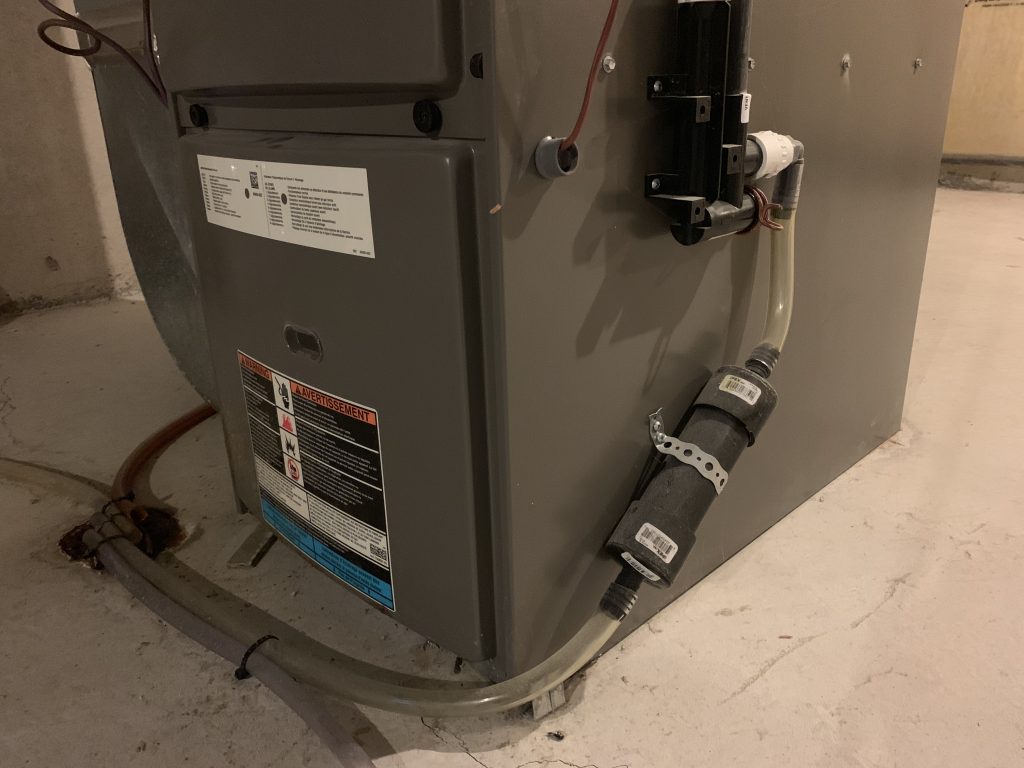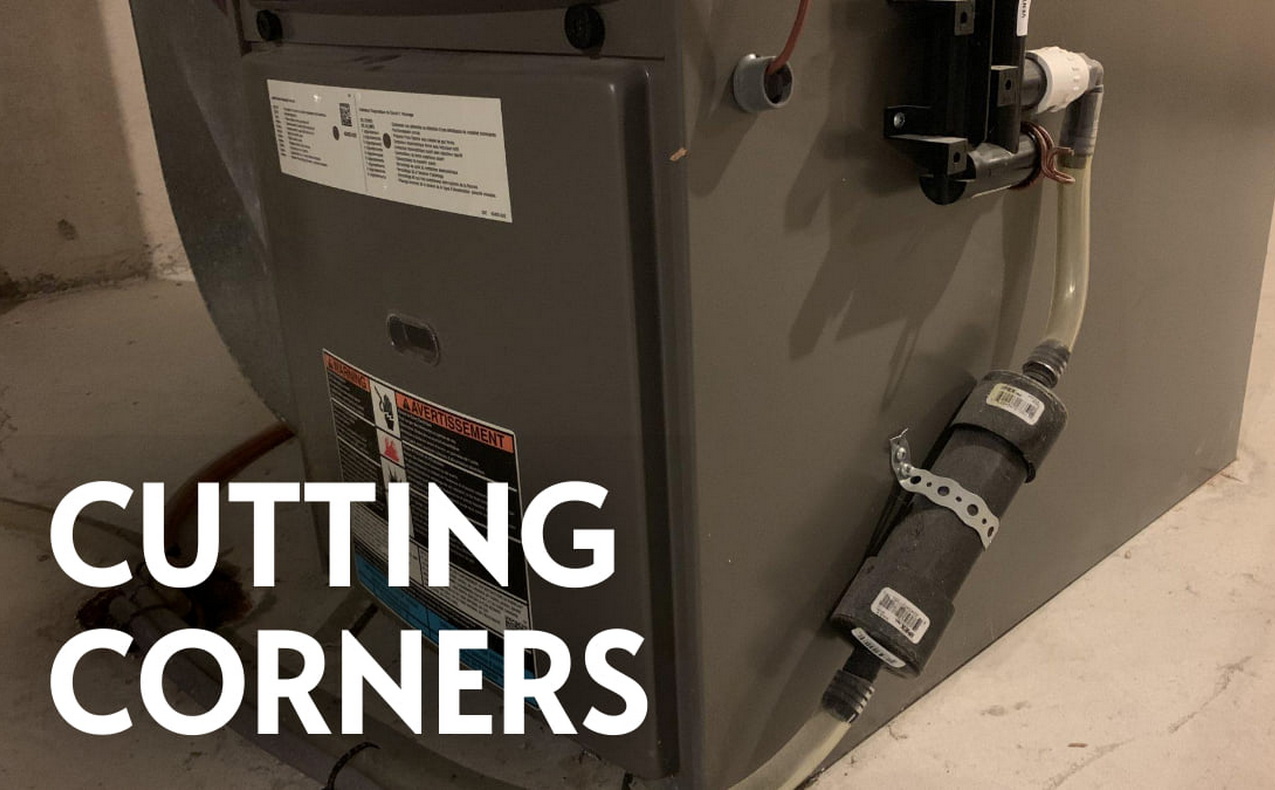When it comes to cutting corners, small things can have big consequences. This is true with life in general, as well as with the technical side of your home.
A situation I consulted on a few years ago is a case in point. It’s especially instructive for anyone with a finished or soon-to-be-finished basement, but the lessons go way beyond this. Learn from the trouble of others and it can save you grief.
The fun started when a plastic drain hose popped off a spigot coming out of the gas furnace in a new, million-dollar home. The spigot is where condensed water from inside the furnace is supposed to drain away harmlessly, but things didn’t work that way.
The installer had forced the hose onto a fitting that it wasn’t designed for, and he was too lazy to put a clamp on the connection. He also failed to locate the hose properly, so it ran right across a doorway leading from a finished hallway into the unfinished furnace room.
One small snag on someone’s foot one morning and the tube quietly popped free of the furnace, letting 10 gallons of highly acidic condensed combustion water from the gas furnace leak quietly and unnoticed under a laminate floor in a neighbouring hallway over the course of the next 36 hours.
By the time someone realized there was a problem, squishy sounds were coming from the flooring whenever you walked on it. The seams of the laminate were visibly swollen by then, too.
While none of this would have happened if the furnace installer had done his job properly, what occurred next is an example of how trouble snowballs. You can see a condensate line coming off a typical furnace below.

If the laminate floor had been installed over raised subfloor tiles originally, the leaked water would not have been an issue. It would have drained away harmlessly after the leak was stopped, either by finding the floor drain or by simply soaking down through the porous, unpainted concrete.
But since the flooring and its foam underlay were tight to the concrete with no subfloor (more cutting corners), there was no allowance for trouble. That lack of a subfloor was another shortcut that saved the builder a few pennies, but also made the snowball bigger.
After the homeowner reported the soggy floor to the insurance company, a mould expert arrived. Without even attempting to dry the floor and see if mould was developing (it couldn’t have — the floor hadn’t been wet long enough), he cut and removed the flooring from the squishy swath of hallway before anyone knew what was happening. Ragged, ugly splintered edges of freshly-cut laminate ringed the newly exposed concrete where the soggy floor used to be.
While it’s prudent to be concerned about mould and moisture developing underneath soggy flooring, I suspect the water would have dried just fine without floor removal. A fan, a heater and a dehumidifier were at least worth a try.
The concrete floor was unpainted, too, so it was porous and thirsty. Indeed, the squishiness was completely gone and the swollen edges of flooring planks had almost disappeared before the over-eager guy with the saw even arrived.
With the old floor cut out and ruined, insurance repairs were now part of the deal. But how much would the insurance company kick in?
The homeowner expected the laminate floor over the entire basement to be replaced, since she felt a simple patch in the hallway would never match the remaining floor. That said, the original laminate basement floor was never well-liked, so what better time to put down a completely different kind of floor, perhaps with radiant in-floor heating underneath, too?
Ballooning cost estimates for the issue were now well into five figures — way beyond what the insurance company was offering, with the prospect of weeks of disruption and a dumpster in the driveway to hold the trashed laminate.
In the end, after considering all the options, the homeowners decided to simply go with my recommendation of replacing the cutaway floor and seeing how that looked. It would be cheaper, easier and more environmentally sound.
But it was too bad it had to happen at all. It shouldn’t have. The repair was done surprisingly well, though that’s not the point.
A little more diligence with a small plastic hose, a little less cutting corners that eliminated a proper subfloor in a home that’s expensive enough to have had one, a little more patience after the leak to allow drying to happen, and a whole lot of trouble and expense could have been avoided.


